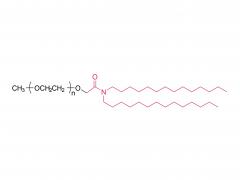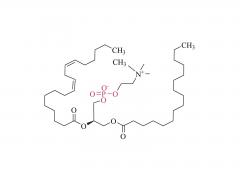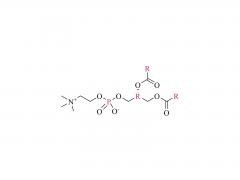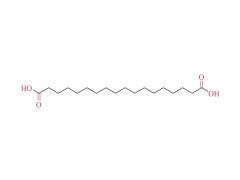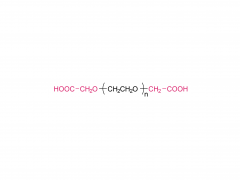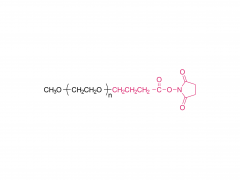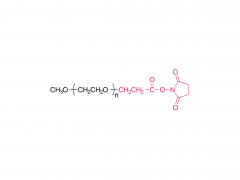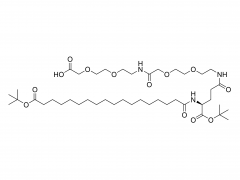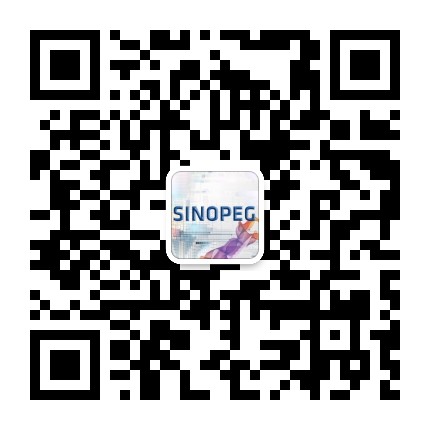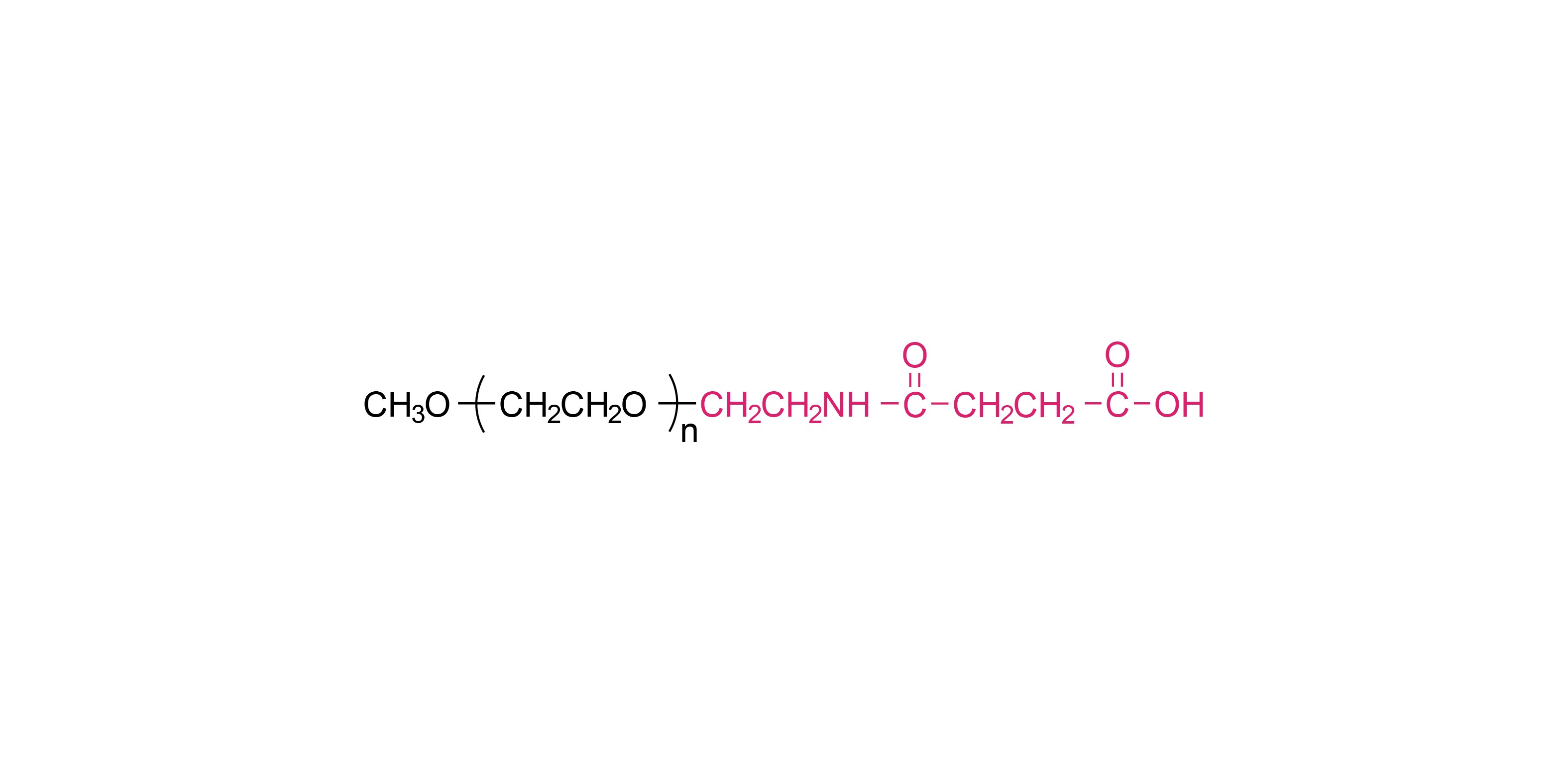
1. Structure and composition of mPEG-SAA
Mpeg-saa was prepared from methoxy polyethylene glycol (mPEG) and Succinimide Activated Acetate (SAA) through directed biosynthesis. Among them, the PEG part gives mPEG-SAA good water solubility and biocompatibility, while the succinic anhydride group provides an active site for it to react with biomolecules.
2. Functional group characteristics
The functional group of mPEG-SAA mainly refers to the succinic anhydride group (SAA) at its end. This functional group has the following properties:
Reactivity: The succinic anhydride group has high reactivity and can chemically react with amine groups and peptide coupling agents, so as to achieve the coupling of biomolecules. This reactivity makes mPEG-SAA valuable in the construction of bioconjugates.
Biocompatibility: mPEG-SAA has good biocompatibility due to the presence of the PEG part. This means that it does not trigger a significant immune response or rejection in living organisms, thus guaranteeing its safety for biomedical applications.
Water solubility: The PEG portion also gives mPEG-SAA a good water solubility. This makes mPEG-SAA stable in aqueous solutions and easy to react with biomolecules.
3. Application
Bioconjugator construction: mPEG-SAA can act as a linking molecule, coupling different biological molecules (such as proteins, antibodies, drugs, etc.) together to build bioconjugators with specific functions. These bioconjugates have a wide range of applications in biomedical research, such as drug delivery systems, biomarkers, etc.
Polymer material preparation: mPEG-SAA can also be used to prepare polymer materials, and by introducing mPEG-SAA, the physical properties and chemical stability of the material can be improved to meet the needs of specific applications.
Biomedical field: In the biomedical field, mPEG-SAA can be used to prepare targeted delivery systems, tissue engineering materials, etc. By modifying molecules or bioactive substances, mPEG-SAA can improve its stability, water solubility, and biocompatibility, thereby enhancing its application effect in living organisms.
Product technical advantage
SINOPEG offers high quality PEG derivatives with novel and diverse product structures, abundant substituting groups, and high end-group substitution rates.
High PEG functional group content - Content up to 99%
Functionalization of PEG is the most difficult of PEG products. The common problem of the main products on the market is that the functional group content is not high. And we master the modification technology, initiation system, unconventional precipitation method and system extraction method and other technologies and processes can easily produce high functional group content products. The functional group content of most products can reach 99%, which is much higher than the 90% or so of rivals.
High quality PEG molecular weight control -PDI <1.05
The single molecule chain of a polymer is usually composed of many small repeating units connected by polymerization. The design and control of the synthesis method has a crucial influence on the length of a single polymer segment and the similarity of the length of multiple polymer segments. Our PEG synthesis technology guarantees very good dispersion (PDI<1.05), while many other companies' products typically have PDI around 1.1.
Relevant recommendation
|
mPEG-NH2
|
3-arm PEG-OH
|
|
mPEG-CM
|
3-arm PEG-NH2
|
|
mPEG-SA
|
3-arm PEG-CM
|
|
mPEG-SH
|
3-arm PEG-SH
|
|
mPEG-pALD
|
3-arm PEG-SC
|
|
mPEG-MAL
|
3-arm PEG-N3
|
|
mPEG-SC
|
3-arm PEG-NH2·HCl
|
|
mPEG-NPC
|
4-arm PEG-OH
|
|
mPEG-SS
|
4-arm PEG-NH2
|
|
mPEG-N3
|
4-arm PEG-CM
|
|
mPEG-AA
|
4-arm PEG-SA
|
|
mPEG-MA
|
4-arm PEG-SH
|
|
mPEG-VS
|
6-arm PEG-OH
|
|
mPEG-NH2·HCl
|
6-arm PEG-NH2
|
|
2-arm PEG-OH
|
6-arm PEG-CM
|
|
2-arm PEG-COOH
|
6-arm PEG-SA
|
|
2-arm PEG-NHS
|
6-arm PEG-SH
|
|
2-arm PEG-MAL
|
8-arm PEG-NH2
|
|
2-arm PEG-NH2
|
8-arm PEG-CM
|
|
2-arm PEG-Acetal
|
8-arm PEG-SA
|
|
2-arm PEG-CHO
|
8-arm PEG-SH
|
|
2-arm PEG-N3
|
8-arm PEG-pALD
|







